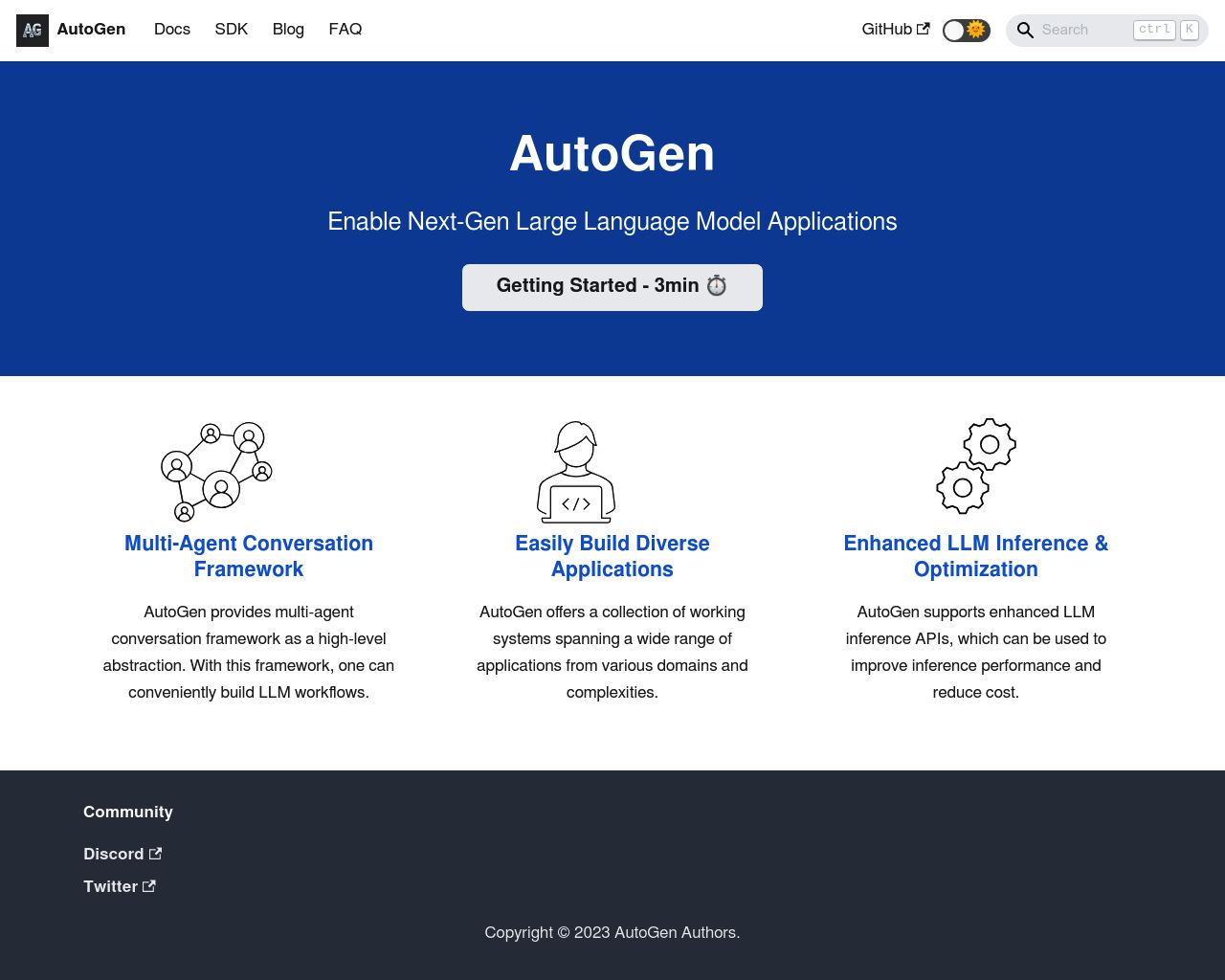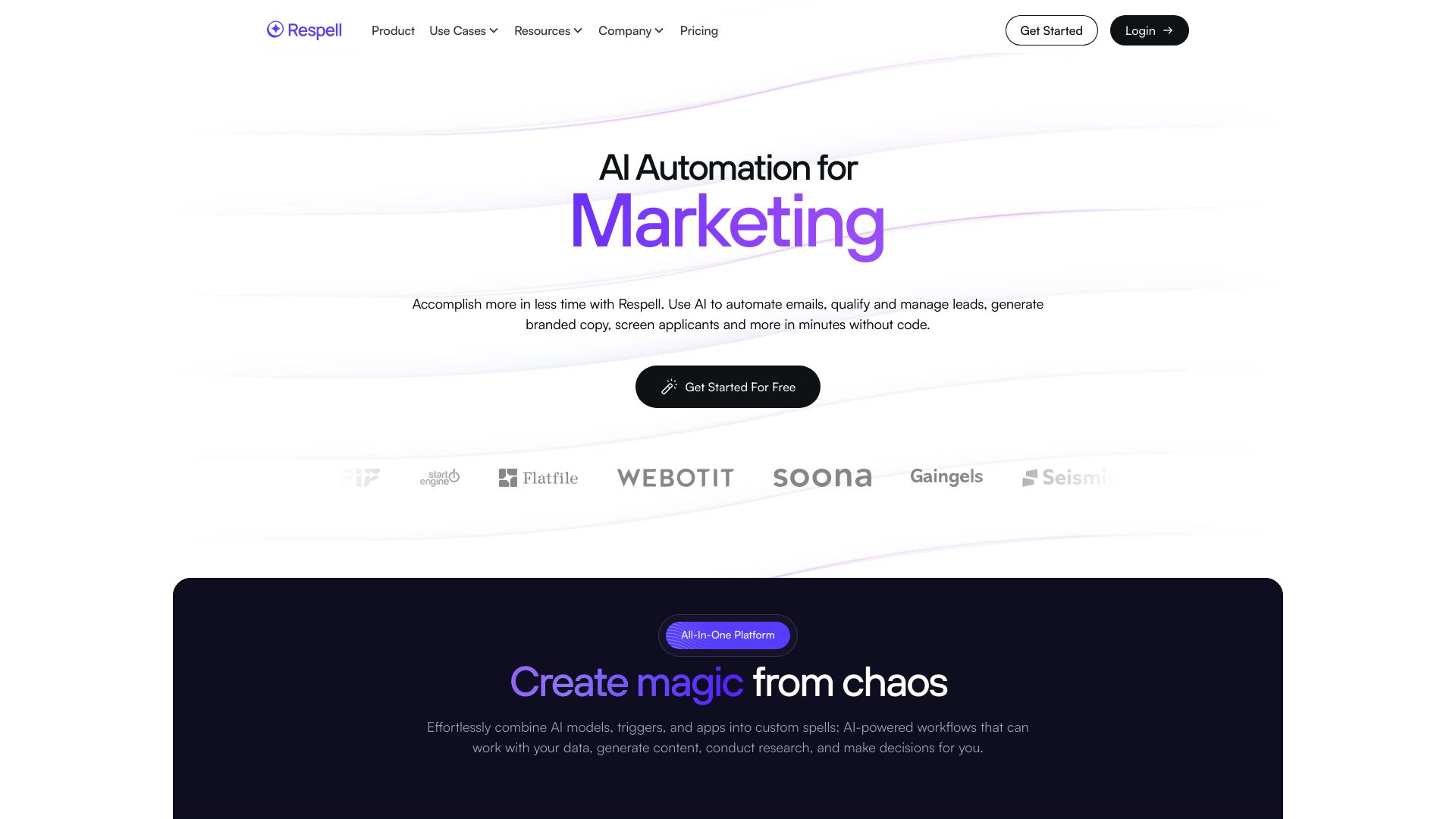AutoGen vs. Respell: Comparing AI Agent Development Platforms
AI-powered agent development platforms revolutionize how businesses and developers create intelligent applications. AutoGen vs. Respell, and SmythOS each offer unique approaches to building AI agents, from code-based frameworks to no-code solutions. This comparison explores their key features, strengths, and limitations to help you choose the right platform for your AI development needs. Whether you’re a seasoned developer seeking fine-grained control or a business user looking to automate workflows without coding, understanding these platforms’ capabilities is crucial for leveraging AI effectively in your projects.
AutoGen Overview
AutoGen empowers developers to build sophisticated AI applications through multi-agent conversations. This open-source framework orchestrates interactions between customizable agents, Large Language Models (LLMs), tools, and humans to tackle complex tasks.


AutoGen’s core strength lies in its flexible agent architecture. Developers can create autonomous agents that collaborate to solve problems, integrating LLMs like GPT-4 for enhanced reasoning capabilities. The framework supports both fully autonomous operations and human-in-the-loop scenarios, adapting to various use cases from automated task solving to complex problem-solving in group chats.
AutoGen’s core strength lies in its flexible agent architecture. Developers can create autonomous agents that collaborate to solve problems, integrating LLMs like GPT-4 for enhanced reasoning capabilities.
The platform maximizes LLM performance through advanced inference features. These include tuning, caching, error handling, and templating, crucial for optimizing expensive language models. AutoGen also provides debugging tools and logging functionalities, enabling developers to fine-tune their AI systems effectively.
While AutoGen offers powerful capabilities, it requires coding knowledge to set up agents and workflows. The lack of a visual builder or no-code editor may present a steeper learning curve for non-technical users. However, this code-based approach allows for greater customization and control over agent behaviors and interactions.
AutoGen’s versatility shines in its application to diverse domains. From code generation to continual learning, the framework demonstrates effectiveness across a wide range of tasks. Its support for multimodal agents, capable of handling text and images, further expands its potential use cases. AutoGen’s focus on enhancing LLM applications through conversation-driven control and agent customization positions it as a valuable tool for developers seeking to push the boundaries of AI-powered solutions.
Respell Overview
Respell empowers users to create AI workflows, automations, and agents without coding expertise. The platform’s no-code approach democratizes AI development, making it accessible to a wide range of professionals.
Respell’s core offering, the Spell Studio, provides a drag-and-drop interface for building customized AI workflows called “spells.” Users can leverage pre-built templates or create their own, tailoring AI solutions to specific business needs. The platform supports integration with popular services like Airtable, Slack, and Salesforce, expanding its utility across various business processes.
Respell empowers users to create AI workflows, automations, and agents without coding expertise. The platform’s no-code approach democratizes AI development, making it accessible to a wide range of professionals.


A standout feature is Elle, Respell’s AI assistant. Elle not only facilitates natural language interactions but also learns team processes and suggests workflow improvements. This AI-powered assistant can build spells, conduct research, and schedule tasks, acting as a virtual team member.
Respell offers robust data handling capabilities. Users can upload documents and context for reference in spells or chat interactions. The platform also provides API endpoints for all spells, ensuring seamless upgrades and model changes without requiring coding adjustments.
While Respell excels in user-friendliness and integration capabilities, it may have limitations for users requiring highly specialized or complex AI implementations. The platform’s strength lies in its ability to streamline common business processes and automate workflows, rather than in deep, technical AI development.
Feature Comparison
AutoGen and Respell offer distinct approaches to AI agent development, each with its own strengths and limitations. AutoGen excels in providing a flexible, code-based framework for creating sophisticated multi-agent systems. Its support for customizable agents, enhanced LLM inference, and debugging tools make it ideal for developers seeking fine-grained control over their AI implementations. AutoGen’s multi-agent collaboration capabilities and support for both autonomous and human-in-the-loop operations demonstrate its versatility in handling complex tasks.
Respell, on the other hand, prioritizes accessibility with its no-code approach. The platform’s drag-and-drop Spell Studio and pre-built templates significantly lower the barrier to entry for AI development. Respell’s strength lies in its user-friendly interface and integration capabilities, making it particularly suitable for business users looking to automate workflows without extensive coding knowledge. However, this ease of use may come at the cost of some advanced customization options that AutoGen offers.
In terms of core components, AutoGen provides more robust tools for developers, including advanced debugging features and support for multimodal agents. Respell compensates with its AI assistant Elle, which can suggest workflow improvements and build spells autonomously. Regarding security, while both platforms offer integration with various APIs, AutoGen’s documentation provides more detailed information on its security features, including OAuth support. Respell’s security measures are less explicitly detailed in the available information, potentially indicating a gap in this area compared to AutoGen’s more comprehensive approach.
Feature Comparison Table
| AutoGen | Respell | SmythOS | |
|---|---|---|---|
| CORE FEATURES | |||
| Visual Builder | ❌ | ✅ | ✅ |
| No-Code Options | ❌ | ✅ | ✅ |
| Agent Work Scheduler | ❌ | ✅ | ✅ |
| SECURITY | |||
| Constrained Alignment | ❌ | ❌ | ✅ |
| IP Control | ❌ | ❌ | ✅ |
| COMPONENTS | |||
| Huggingface AIs | ✅ | ❌ | ✅ |
| Data Lakes | ❌ | ❌ | ✅ |
| DEPLOYMENT OPTIONS (EMBODIMENTS) | |||
| Staging Domains | ❌ | ❌ | ✅ |
| Production Domains | ❌ | ❌ | ✅ |
| Deploy as Scheduled Agent | ❌ | ✅ | ✅ |
| Deploy as GPT | ✅ | ❌ | ✅ |
| DATA LAKE SUPPORT | |||
| Hosted Vector Database | ❌ | ❌ | ✅ |
| Sitemap Crawler | ❌ | ❌ | ✅ |
| YouTube Transcript Crawler | ❌ | ❌ | ✅ |
Best Alternative to AutoGen and Respell
SmythOS stands out as the superior alternative to AutoGen and Respell, offering a comprehensive platform for AI agent development and deployment. We’ve designed SmythOS to address the limitations of other platforms while providing unparalleled ease of use, an extensive feature set, and support for unlimited use cases.
Our visual builder sets SmythOS apart from AutoGen’s code-based approach, allowing users of all skill levels to create sophisticated AI agents without extensive programming knowledge. Unlike Respell’s limited customization options, SmythOS offers a perfect balance of user-friendly interfaces and advanced customization capabilities, ensuring that both novice users and experienced developers can fully leverage the platform’s potential.
SmythOS offers a perfect balance of user-friendly interfaces and advanced customization capabilities, ensuring that both novice users and experienced developers can fully leverage the platform’s potential.
SmythOS excels in its deployment options, offering features that neither AutoGen nor Respell provide. Our platform supports staging and production domains, allowing for seamless development and testing before live deployment. We also enable users to deploy their agents as GPTs, a capability that Respell lacks, opening up new avenues for AI integration and interaction.
Security and scalability are paramount in SmythOS. We’ve implemented robust features like constrained alignment and IP control, addressing critical security concerns that are not explicitly addressed in AutoGen or Respell’s documentation. Our hosted vector database and support for various data sources, including sitemaps and YouTube transcripts, provide a level of data management sophistication that surpasses our competitors.
By choosing SmythOS, users gain access to a platform that not only matches the best features of AutoGen and Respell but goes beyond, offering a more complete, secure, and versatile solution for AI agent development. Our commitment to innovation and user empowerment makes SmythOS the ideal choice for businesses and developers looking to harness the full potential of AI technology.
Conclusion
AutoGen and Respell offer powerful solutions for AI development, each with unique strengths. AutoGen excels in providing a flexible, code-based framework for creating sophisticated multi-agent systems, ideal for developers seeking fine-grained control. Respell, with its no-code approach and user-friendly Spell Studio, makes AI workflow creation accessible to a broader audience, particularly suited for business users looking to automate processes without extensive coding.
However, SmythOS emerges as the superior choice, combining the best of both worlds. Our platform offers a visual drag-and-drop interface for intuitive AI agent creation, while also supporting advanced customization for tech-savvy users. SmythOS’s extensive integration ecosystem, with over 300,000 pre-built connections, surpasses both AutoGen and Respell in versatility and ease of use.
Unlike AutoGen’s steep learning curve and Respell’s potential limitations for complex implementations, SmythOS provides a balanced approach. We offer robust multi-agent collaboration, advanced debugging tools, and support for various AI models, all within a user-friendly environment. Our “Create Once, Deploy Anywhere” philosophy allows for seamless deployment across multiple platforms, from chatbots to APIs, giving users unparalleled flexibility.
For those ready to experience the future of AI development, we invite you to explore our diverse range of AI-powered agent templates. These templates cover multiple business categories and offer a quick start to revolutionizing your workflow. To see how SmythOS can transform your AI initiatives, create a free SmythOS account and start building unlimited AI agents at no cost. With our 30-day money-back guarantee, you can discover the power of SmythOS risk-free and join the AI workforce 3.0 revolution today.
Last updated:
Disclaimer: The information presented in this article is for general informational purposes only and is provided as is. While we strive to keep the content up-to-date and accurate, we make no representations or warranties of any kind, express or implied, about the completeness, accuracy, reliability, suitability, or availability of the information contained in this article.
Any reliance you place on such information is strictly at your own risk. We reserve the right to make additions, deletions, or modifications to the contents of this article at any time without prior notice.
In no event will we be liable for any loss or damage including without limitation, indirect or consequential loss or damage, or any loss or damage whatsoever arising from loss of data, profits, or any other loss not specified herein arising out of, or in connection with, the use of this article.
Despite our best efforts, this article may contain oversights, errors, or omissions. If you notice any inaccuracies or have concerns about the content, please report them through our content feedback form. Your input helps us maintain the quality and reliability of our information.
